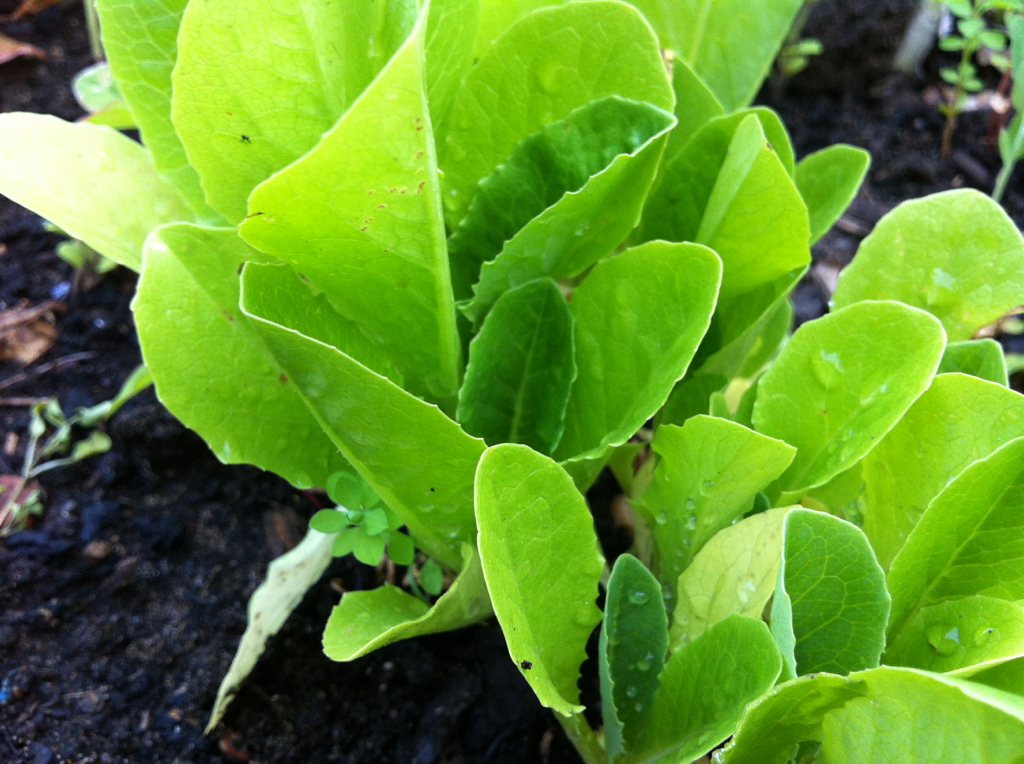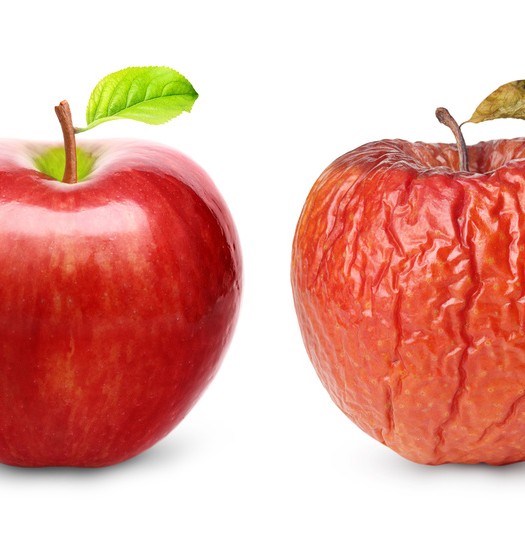how to grow your own nutritious food
Part of our passion at Eat Drink Live Well is to inspire people to reconnect with food. One of the easiest ways to do this is to grow your own. I know from bitter experience this is easier said than done; seeds that don’t germinate, seedlings I forget to water and plants that get eaten by slugs, rabbits and birds seem to rule my life.
But a world without gardening seems inconceivable to me (we’ve written about just why gardening is so good in previous blogs) and so we’ve compiled a list of our Top 10 easy fruit and veg to grow. They’re not all super foods but they’re all crops that:
- Are easy to grow and crop (that’s motivational so should make you want to keep gardening!) and
- Are nutritious – so great if you eat them regularly (and you’re more likely to eat them regularly if they’re free and the shop you get them from is, in fact, your garden).
In alphabetical (rather than nutritional!) order, our top 10 for sowing or planting now are:
1. Apples: They’ll take a few years to fruit but you don’t need a big garden for an apple tree. It’s easy to buy 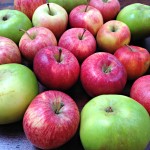 ‘minarette’ or ‘columnar’ trees in varieties you wouldn’t find in the shops (I’m trialling a higher antioxidant red-fleshed variety at the moment); they don’t take up much space and can even be grown in a pot. Once established they need little TLC and they fruit easily and for years; nutritionally we count them as a superfood as they’re rich in pectin and are one of the best sources of beneficial anti-inflammatory flavonoid quercitin. Read more about the health benefits of apples here.
‘minarette’ or ‘columnar’ trees in varieties you wouldn’t find in the shops (I’m trialling a higher antioxidant red-fleshed variety at the moment); they don’t take up much space and can even be grown in a pot. Once established they need little TLC and they fruit easily and for years; nutritionally we count them as a superfood as they’re rich in pectin and are one of the best sources of beneficial anti-inflammatory flavonoid quercitin. Read more about the health benefits of apples here.
2. Blueberries: Blueberries definitely tick the superfood box – supportive of memory, blood sugar and  heart health. They crop well and need an acid soil – so in many ways are better suited to a patio pot than open ground (and you can more easily throw a net over them to protect from the birds). Buy young plants in the garden centre. They’re great in our blueberry margarita….
heart health. They crop well and need an acid soil – so in many ways are better suited to a patio pot than open ground (and you can more easily throw a net over them to protect from the birds). Buy young plants in the garden centre. They’re great in our blueberry margarita….
3. Broccoli Sprouts: Broccoli is classed as a superfood for many reasons, but particularly due to its ability to support  detoxification. In the garden it does better in a heavy soil, but it takes up space for much of the year, and is vulnerable to a range of pests. An easy solution is to grow broccoli sprouts in a seed tray – these tiny ‘microgreens’ take just a week to grow and have up to 100x the potency of the detox-supportive and anti-cancer sulforaphane. Buy microgreens packets in the garden centre.
detoxification. In the garden it does better in a heavy soil, but it takes up space for much of the year, and is vulnerable to a range of pests. An easy solution is to grow broccoli sprouts in a seed tray – these tiny ‘microgreens’ take just a week to grow and have up to 100x the potency of the detox-supportive and anti-cancer sulforaphane. Buy microgreens packets in the garden centre.
4. Chard: Easier to grow than spinach and harder (and more expensive) to buy in the shops – chard is  one of the best sources of beta-carotene (Vitamin A), Vitamin K, Vitamin C and magnesium; it crops for absolutely ages and looks beautiful in the garden if you sow the rainbow variety. If you sow lots of it you can use the baby leaves for salad leaves and leave some to grow into larger plants. Buy seeds or seedlings in garden centres now.
one of the best sources of beta-carotene (Vitamin A), Vitamin K, Vitamin C and magnesium; it crops for absolutely ages and looks beautiful in the garden if you sow the rainbow variety. If you sow lots of it you can use the baby leaves for salad leaves and leave some to grow into larger plants. Buy seeds or seedlings in garden centres now.
5. Courgettes: Courgettes are massively hydrating, a good source of Vitamin C, potassium and 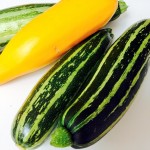 carotenoids including lutein and zeaxanthin, good for eye health. They need a rich soil but can easily be grown in a large pot and the main attraction for me is that I can grow 3 different types – striped, green and yellow, which all look amazing when we start making courgetti for summery lunches! Click here for our prawn courgetti recipe. Sow seeds this month or buy young plants – but wait until frosts have finished before putting them in the garden.
carotenoids including lutein and zeaxanthin, good for eye health. They need a rich soil but can easily be grown in a large pot and the main attraction for me is that I can grow 3 different types – striped, green and yellow, which all look amazing when we start making courgetti for summery lunches! Click here for our prawn courgetti recipe. Sow seeds this month or buy young plants – but wait until frosts have finished before putting them in the garden.
6. Mint: Mint is great for the digestion and is ultra-easy to grow (but expensive in the supermarket if you  use a lot). In fact it’s so easy, it will take over the garden if you’re not careful so grow in a pot instead unless you want acres of it! We grow 6 different types of mints in old chimney pots, including peppermint, spearmint and ‘chocolate’ mint and use it all summer in tabbouleh, infused water and mint tea. Buy small mint plants (not seeds) – they grow really quickly.
use a lot). In fact it’s so easy, it will take over the garden if you’re not careful so grow in a pot instead unless you want acres of it! We grow 6 different types of mints in old chimney pots, including peppermint, spearmint and ‘chocolate’ mint and use it all summer in tabbouleh, infused water and mint tea. Buy small mint plants (not seeds) – they grow really quickly.
7. Potatoes: Ok, we admit you don’t see potatoes on many ‘super foods’ lists but we think new potatoes are  underrated. They are the most reliable veg to grow – throw some seed potatoes into a pot or soil, and they just ‘work’ – you’ll have new potatoes under the soil in around 12 weeks. Freshly harvested new potatoes are a good source of Vitamin C (steam them for highest impact) and a really easy contributor to our fibre intake if you eat the skins. They’re also a great source of potassium – which we need to balance our relatively high salt diets. Eat with protein to keep blood sugar levels balanced.
underrated. They are the most reliable veg to grow – throw some seed potatoes into a pot or soil, and they just ‘work’ – you’ll have new potatoes under the soil in around 12 weeks. Freshly harvested new potatoes are a good source of Vitamin C (steam them for highest impact) and a really easy contributor to our fibre intake if you eat the skins. They’re also a great source of potassium – which we need to balance our relatively high salt diets. Eat with protein to keep blood sugar levels balanced.
8. Radishes: Quite simply, radishes are one of the easiest and quick to grow vegetables – great to 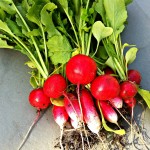 snack on (especially when you’re in the garden!) and fantastic at supporting our detox pathways. A packet of radish seeds contains a few hundred potential radishes for just a few pounds.
snack on (especially when you’re in the garden!) and fantastic at supporting our detox pathways. A packet of radish seeds contains a few hundred potential radishes for just a few pounds.
9. Salad Leaves: Salad is expensive in the shops and we eat such a lot of it in summer; it’s the 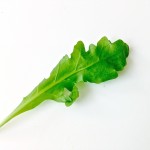 small cut and come again, ‘niche’ leaves such as rocket, mizuna and beetroot that really have the most nutritional impact, and these are just so easy to grow in the garden, in grow bags or in patio pots. Read more about the nutritional benefits of salad leaves here. Buy packets of mixed leaves or a few different seed varieties and mix them up yourself.
small cut and come again, ‘niche’ leaves such as rocket, mizuna and beetroot that really have the most nutritional impact, and these are just so easy to grow in the garden, in grow bags or in patio pots. Read more about the nutritional benefits of salad leaves here. Buy packets of mixed leaves or a few different seed varieties and mix them up yourself.
10. Tomatoes: There’s just nothing like the taste of freshly picked garden tomatoes. This is definitely my OTT 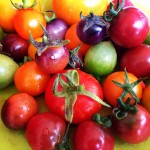 crop – we devote a whole greenhouse to them and grow different varieties and colours: black, purple, green, striped, orange, yellow and red. The different colours contribute different antioxidants and they’re a great source of lycopene when cooked and vitamin C when raw. Sow from seed now (if you want niche varieties) or pick up young plants in the garden centre. Don’t plant them outside until frosts have passed.
crop – we devote a whole greenhouse to them and grow different varieties and colours: black, purple, green, striped, orange, yellow and red. The different colours contribute different antioxidants and they’re a great source of lycopene when cooked and vitamin C when raw. Sow from seed now (if you want niche varieties) or pick up young plants in the garden centre. Don’t plant them outside until frosts have passed.
Spring is the perfect time for planting so why not have a go at a few of these 10 easy foods to grow – and let us know how you get on!
We hope you enjoy this blog post, let us know your thoughts in the comments below or on social media – we’re on Twitter, Facebook, Instagram and Pinterest. And don’t forget to sign up to our newsletter to receive a monthly update of our recipes, nutrition tips and expert advice.

